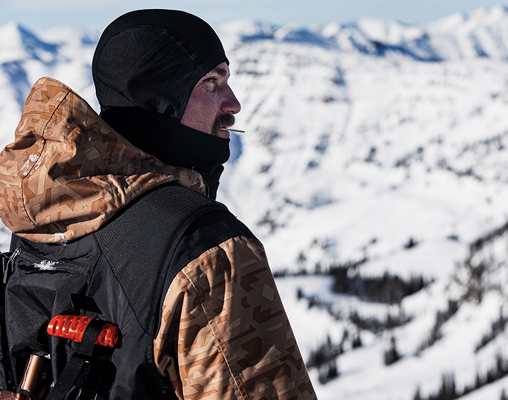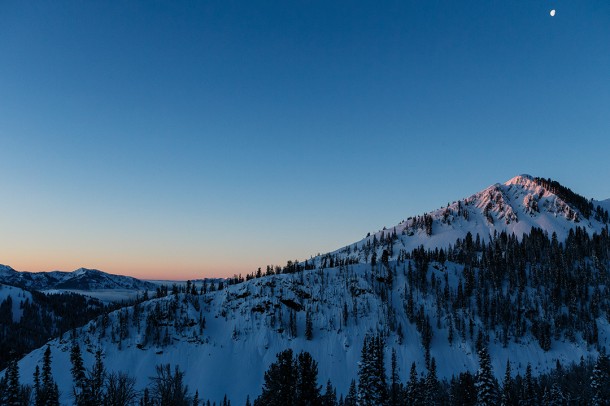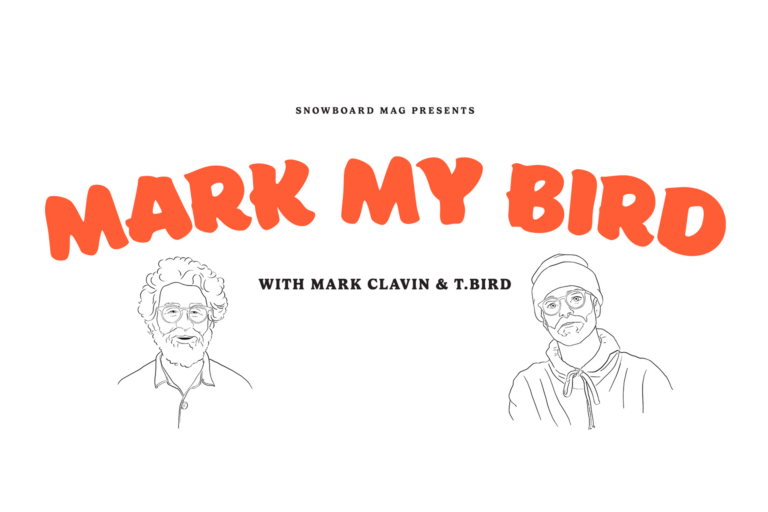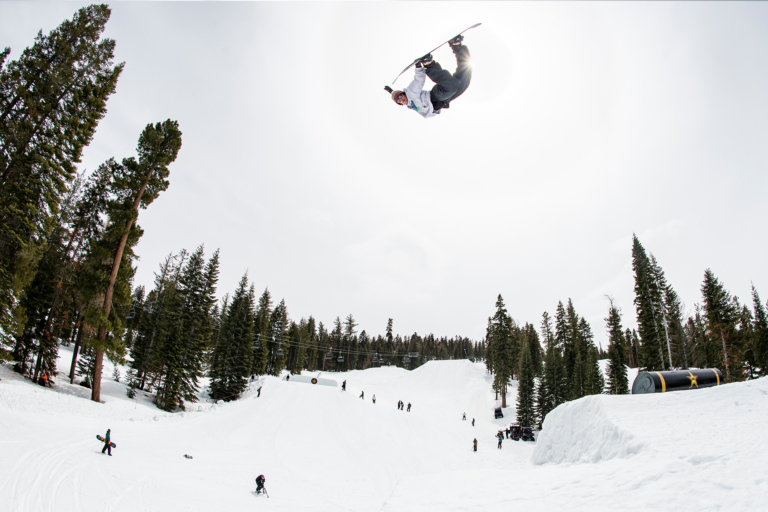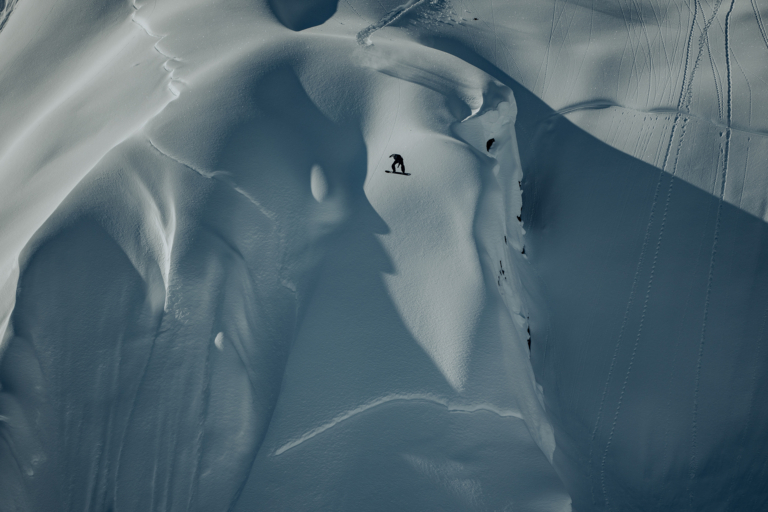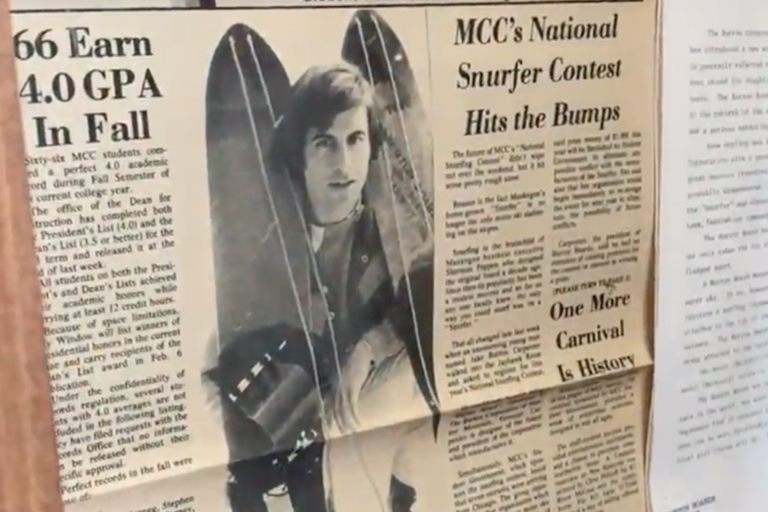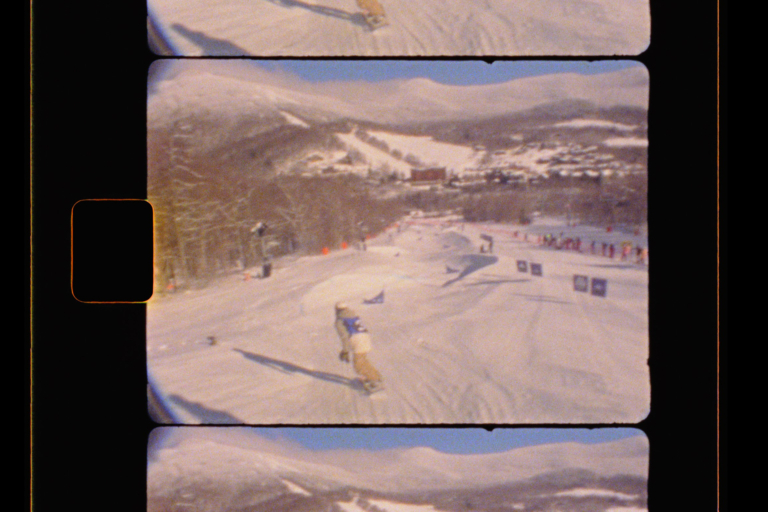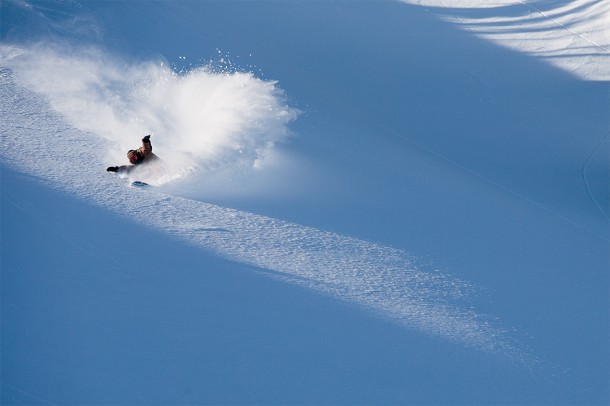
A few days later Mark, Pat and I returned to continue where we’d left off. Unfortunately, Travis couldn’t join us, he set off to Alaska on a “big game hunt” that would make our objective seem like shooting squirrels. We revisited the zone and rode some of the longer lines further down the ridge. After the session we did some more poking around and spotted a huge face with a wide variety of features. We cautiously navigated our way into the bowl and examined the potential lines and began to determine if it would be safe to ride. You don’t get a chance to ride a slope like this in the Rockies often as the snow pack can be unstable, and this was serious avalanche terrain we were looking at. Late in the afternoon we sent a shuttle track to the saddle and began boot packing the rest of the way up the mountain. I dug a few test pits and the snow pack looked solid, ruling out avalanche danger. Once on top we ascended the windward side of a steep and narrow ridge guarded by sections of cornice. While cautiously navigating the hazards we spotted some large animal tracks. Following the footprints we caught the occasional glimpse of pillows stacking the entrance of the slope. Once on top, the potential of terrain unfolded, a one-thousand-foot face beginning with steep pillows opening up to a row of ribs, broken by several cliff bands. It was incredible – a freestyle dream with hits everywhere. Indeed, we had found the “White Wolverine.”
EPILOGUE
I arrived home from Austria on Tuesday night and got invited to go out with Mark Carter, Aaron Dodds, Pat Moore and Kurt Heine bright and early the next day. We had a reset while I was out of town, and reports of good snow was all it took to power through the jet lag and get my act together. The crew had broke trail up to some nice spine lines that I’ve wanted to ride for a long time, and I was stoked to get in on the session. The next morning I was up at 4:30 ready to go… way ahead of schedule. The one good thing about coming home from Europe is you tend to wake up super early from jet lag. I checked the avalanche forecast and it was rated as “moderate,” which basically means a bad layer in the snowpack exists and it is possible to trigger avalanches, but there may only be isolated areas of instability or tough to trigger. It’s not uncommon to be able to ride safely under these circumstances, and I planned on testing & controlling the slopes by cutting cornices before dropping into anything suspect.
After a long, cold and bumpy snowmobile ride we arrived at the base of our lines just as the sun was rising. The spines looked amazing, and we were filled with stoke as we studied the options they held. After a quick regroup we picked our lines and made a plan of how to access the ridge. We decided to break trail on sleds to a certain point and continue hiking from there. I try not to push my luck with the sleds as they are a way more powerful trigger than a single snowboarder, not to mention getting stuck sucks and is a big waste of time and energy. Our plan was to ride up a supported ridgeline separating two bowls. One was smaller but open, and the other was larger with spines and other features that we were going to ride. After several laps on the sleds we had a turn around / drop off set, and I was ready to get started putting in the boot-pack and get to the top. This is where I made the bad decision to take the down track back up which slightly entered the open slope. I was tired from traveling and it looked better than the bumpy ridge. I guess I knew it wasn’t the best option, but it didn’t seem too exposed.
I hopped on Mark’s sled and we climbed the slope with ease until we were just about to the top, when we started slowing down digging deep into the snowpack. I jumped off and Mark pinned it as he turned to the right back towards the ridge to avoid getting stuck. I watched him go about 5 more feet when the slope broke… we were caught in an avalanche. At that moment it was as if things were playing in slow motion. I remember yelling to Mark that it was sliding as I felt the rug getting pulled out from under me. Suddenly, it was like I was in a river and instinctively began swimming as hard as I could towards the edge of the fracture line, doing my best to stay on top and get out of it. At the same time Mark’s sled was tumbling down the mountain just above me, and I had to race below it to get out of the way. We both made it out quickly, but his sled and my board ended up at the bottom. We were shook up from the slide and assessed the scene. It was a small, but deep (80cm) slide that failed on a crust / facet layer. I did several fracture-line profiles and my tests results found hard but clean shears off the weak bed surface.
We now had to make the difficult decision to either continue on to ride our lines or retreat. Now that the slope was cleared, getting up to the top wasn’t going to be a problem so we hiked up as originally planned. Once on top we cut some large cornices with my rope dropping them on the slope with no results. We rode our lines with no further incidents, but it was really hard to shake off what had just happened. This type of instability is hard to predict and can be difficult to trigger, but has the potential to be large and destructive. I’m definitely concerned with this weak layer and will be watching it closely in the future as new snow continues to load.
